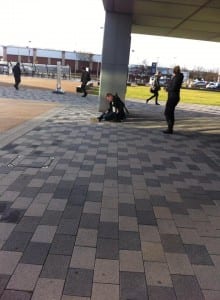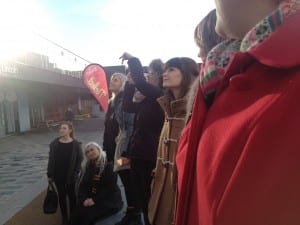Firstly hello everyone!!
This is my first ever time writing a blog, guess I better get started. I experienced my first Site Specific seminar on Monday, and I’m not going to lie I wasn’t really looking forward to it. However after reading the introduction of Site Specific performance by Mike Pearson got me thinking that any place in the world could be a performance.
A quote that I liked from the reading was ‘the play-as-event belongs to the space, and makes the space perform as much as it makes actors perform’ (Wiles, 2003, p.1).
Within the seminar we as a group were set a task outside the lincoln performing arts centre, to see how we as performers would react with set rules. The start of site specific module had really begun. From people watching to trying remain invisible. Yes I did say invisible? When I first read that on the piece of paper Rachel (our tutor) had given us I had no clue how to become invisible. Having bright pink hair is a dead give away of where I was, so my only chance of hiding went out of the window.
But towards the end of this task as a group we naturally all ended up being tall and staring at the LPAC sign, while doing this other students were starting to look to see what we were looking at. Then I realised we had done the start of a performance!! It was that easy.
Well I think I’m going to enjoy this module. Ideas have already started rolling around in my head. For now I’m looking forward to exploring more of lincoln on Monday.
Bye x
Wiles, D. (2003) A Short History of Western Performance Space. Cambridge: Cambridge University Press.

![IMG_0986[1]](https://sitespecific2015rba.blogs.lincoln.ac.uk/files/2015/01/IMG_09861-e1422466823390-225x300.jpg)
![IMG_0986[1]](https://sitespecific2015rba.blogs.lincoln.ac.uk/files/2015/01/IMG_09861-e1422467105878-225x300.jpg)


